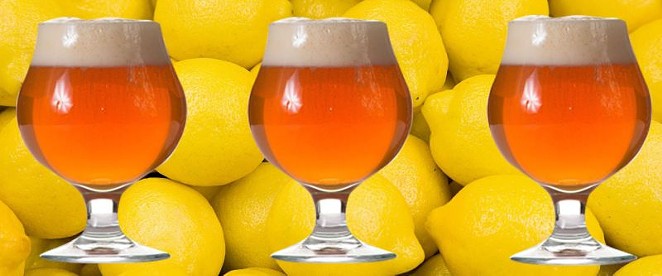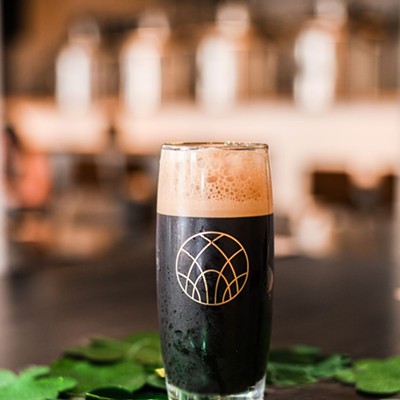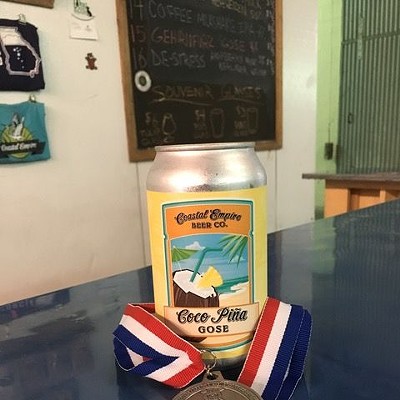SOUR BEER may sound a little redundant. Beer is after all fermented, i.e. soured, in the first place, so you may ask what the difference is between a sour beer and regular beer.
You might also ask why, if there is a difference, anyone would want to drink something that is soured. No one likes sour milk, so sour is a bad thing, right? Like so many things in this world, reality is much more complex than names express.
In many ways souring is very similar to fermentation and could be considered a subset of the fermentation process, but there are some significant differences. Fermentation is the metabolic processes used by microorganisms to breakdown sugars.
Some of the byproducts of fermentation are gases and alcohol, all the things we want in our beers. Yeasts and some bacteria create beer by fermenting (eating) the sugars released by grain in the production of beer and producing carbonation and ethanol, which we like in our beers.
Souring is also a metabolic processes used by microorganisms to breakdown sugars. But with souring there is an additional byproduct that gives sour beers and foods like pickles and sauerkraut an additional bite.
That extra ingredient is acid. It is your reaction to the amount and type of acid in the beer that gives it the tart or sour taste The range of acid is as wide as the range of IBUs available in IPAs. Mild sours have a nice tang to them while the other end of the spectrum could be teeth achingly, mouth puckeringly tart.
The range of sourness, the various critters used to create sours and a few different ways to introduce those critters allow for a huge spectrum of beers to fit any palate. Let's talk about the organisms unusually used to make these beers first.
There are several types of organisms used to make sour beers but we’ll focus on the two main ones. First is Brettanomyces, a wild form of yeast that was originally seen as a “bad” yeast. In fact, its name is derived from the Greek for “British fungus” because it was first cataloged as an infection in British beers.
Brett, as its most commonly called, gives most beers a bad odor and can lead to gushing bottles of beer, so most breweries work hard to keep it out. Those that have adopted and cultivated Brett prize it for its tartness, rich earthy flavors and spiciness.
Lactobacillus is also a common sour-imparting organism. Lacto is a bacteria that converts sugars into lactic acid instead of alcohol, the same process that makes your muscle sore after a hard run and the same bacteria responsible for yogurt and kimchi. Lacto produces a smoother or cleaner tartness that Brett and is generally used in lighter sour beers like goses and Berliner weisses.
Pediococcus (aka pedio) is in the same family of bacteria as Lacto but produces a harsher tartness. It’s used in the production of Flanders reds and lambics.
Lacto and Brett work well together so you’ll see them used in unison on some beers. Pedio makes for more sourness and boosts the fuel for Lacto. Lacto, for its part, mellows the harsher side of pedio providing a smoother drinking experience.
There are three ways of making a sour beer. The most common is brewing a beer, inoculating it with one or more of the critters discussed above and letting it sit in a barrel until it’s the correct flavor and sourness. Obviously this works, it’s been done for centuries, but it does have the potential for going astray.
Some beers are made via a cool ship (koelship in Flemish) which is a large vessel used to cool wort very quickly. Cool ships are open to the air, which is how it cools but also open to inoculation by any wild organisms. Only a handful of modern U.S. breweries use coolships; Allagash, Jester King and New Glarus to name a few, and none are located in Georgia.
Both barreling and coolships take a while, as the souring process is much slower than that of regular fermentation.
Many modern breweries are using a process called kettle souring. This process lessens the possibility of “bad” infections and speeds up the souring process. In kettle souring the wort is inoculated after lautering but then kept at a higher temperature, around 125 degrees for a day or two. The heat speeds up the souring process and kills off some less resistant bugs.
After a day or two the heat is increased to kill off the souring agent and its ready to go. Two to three days instead of months in a barrel is far more economical and accessible. Still, kettle souring has its naysayers as it is seen by some as untraditional and commercial.
Sours are a trend right now for a reason. They taste good, can be very refreshing and are a turn from the ever present IPA. Goses and Berliner weisses are mild sours that, if you enjoy sour drinks like margaritas, are a great introduction to this style.
From there you can increase your sour tolerance by moving up to lambics, gruezes (a blend of several aged lambics) or krieks (cherry infused lambics) and oud bruins (a soured brown ale). These marry the sourness with a fruitiness producing refreshing drinks. From there you can move into the harsher sours, some of which are peel-the-enamel-off-your-teeth sour.
Whatever your sour tolerance, there is a beer out there for you. Seek sours out and give them a try. Sour beers current popularity means they are more accessible than ever.

























